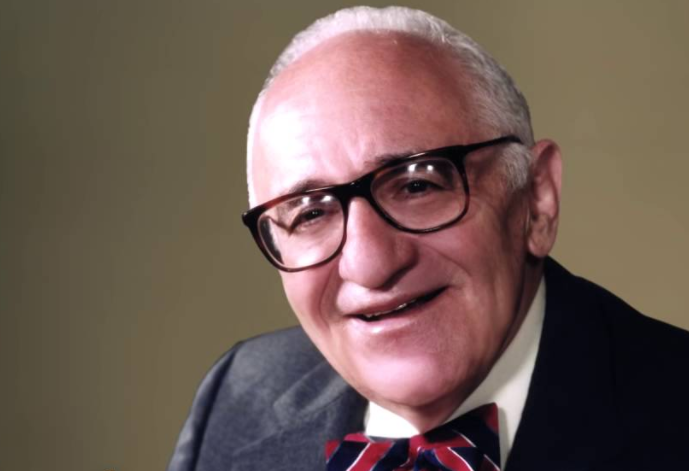[This selection is adapted from “The Labor Theory of Value: A Critique of Carson’s Studies in Mutualist Political Economy,” Journal of Libertarian Studies 20, no. 1 (2006). Please see original for full references and footnotes.] Before proceeding, we should be clear on what an economic theory of value is supposed to do: its task is simply to explain the exchange value of particular goods and services. That is, an economic theory of value must explain why someone selling good X can receive x berries in exchange for it, whereas someone selling good Y will only find someone willing to give up y berries in exchange for his good (where y< x). In the context of a money economy, of course, an economic theory of value must explain the money prices of various goods and
Topics:
Robert P. Murphy considers the following as important: 6b) Mises.org, Featured, newsletter
This could be interesting, too:
Eamonn Sheridan writes CHF traders note – Two Swiss National Bank speakers due Thursday, November 21
Charles Hugh Smith writes How Do We Fix the Collapse of Quality?
Marc Chandler writes Sterling and Gilts Pressed Lower by Firmer CPI
Michael Lebowitz writes Trump Tariffs Are Inflationary Claim The Experts
[This selection is adapted from “The Labor Theory of Value: A Critique of Carson’s Studies in Mutualist Political Economy,” Journal of Libertarian Studies 20, no. 1 (2006). Please see original for full references and footnotes.]
 Before proceeding, we should be clear on what an economic theory of value is supposed to do: its task is simply to explain the exchange value of particular goods and services. That is, an economic theory of value must explain why someone selling good X can receive x berries in exchange for it, whereas someone selling good Y will only find someone willing to give up y berries in exchange for his good (where y< x).
Before proceeding, we should be clear on what an economic theory of value is supposed to do: its task is simply to explain the exchange value of particular goods and services. That is, an economic theory of value must explain why someone selling good X can receive x berries in exchange for it, whereas someone selling good Y will only find someone willing to give up y berries in exchange for his good (where y< x).
In the context of a money economy, of course, an economic theory of value must explain the money prices of various goods and services. In this sense, an economic theory of value is really just a theory of price formation. However, any satisfactory theory must be relevant even in a world of purely direct exchange, and (in principle) should be able to explain the exchange ratios prevailing between any two types of goods, regardless of whether one of them is a money commodity.
The Classical Cost (Labor) Theory of Value
The classical economists (by which I mean writers such as Adam Smith, David Ricardo, and John Stuart Mill, but also Fréderic Bastiat) adhered to some version of the cost theory of value, and in particular a labor theory of value. Although each writer differed in minor details and points of emphasis, at this level of generality we can take a cost theory of value to state the following: a good’s “natural” (or long-run) price is equal to its total cost1 of production. Similarly, a labor theory of value claims that a good’s natural price is proportional to the total quantity of labor required to produce it.2
At first glance, it would seem as if these two theories were incompatible, and yet one can find numerous passages from a given classical economist in which he seems to support one or the other. How to explain this apparent contradiction? The answer is that labor was viewed as the only fundamental “cost” involved in the production of a good; the costs of a given commodity could thus be ultimately reduced to a certain amount of human toil.
A numerical example will be useful. Suppose that the price of a haircut is $6, while the price of a shoeshine is $7.50. A proponent of the cost theory of value could explain this as follows:
The haircut takes thirty minutes of labor, and the scissors are depreciated by 1/20 of their full value, because (let us suppose) the scissors must be replaced after twenty haircuts. The wage rate is $10 per hour, and a new pair of barber’s scissors costs $20, and hence the total cost per haircut is $5 + $1 = $6. In contrast, a shoeshine takes only fifteen minutes of labor, and uses up 1/5 of a can of shoe polish. It costs $25 for a new can of shoe polish. Therefore the price of the shoeshine must be $2.50 + $5.00 = $7.50.
Now a proponent of the labor theory of value could heartily concur with the above cost analysis and simply push it back one step:
The reason the scissors cost $20 is that (let us suppose) it takes a worker forty-five minutes to turn an ounce of metal into a finished pair of scissors, and the metal costs $12.50 per ounce. Similarly, the reason the new can of shoe polish costs $25 is that (let us suppose) it takes a worker two hours to turn $5 worth of wax into the finished product. We thus see that the price of the shoeshine is really reducible to the price of 15 + 24 = 39 minutes of labor, i.e., $6.5 worth of labor, plus $1 worth of wax,3 for a total price of $7.50. Notice that we have gotten rid of the cost of the can of shoe polish altogether. And were we to continue, we would ultimately reduce the price of the shoeshine into the total amount of labor time that went into it (which we know must be forty-five minutes, since the shoeshine costs $7.50 and the wage rate is $10).
As this simplistic numerical example illustrates, one could theoretically trace back the expenditures on inputs until all intermediate capital goods had been eliminated. This procedure is quite similar, of course, to the process by which Austrians impute all net productivity to the “original factors” of land and labor. The difference, however, lies in the fact that the labor theorist of value does not believe the owner of an original natural resource can earn a rent on his or her factor input. Because only human beings experience discomfort from providing labor, even the prices of natural resources can ultimately be reduced to inputs of labor; Mother Nature never charges for her services.
A Critique of the Classical Cost (Labor) Theory of Value
The cost theory of value has its merits. It does provide a coherent explanation of market prices, in particular relative prices; good X costs twice as much as good Y because it costs twice as much to produce good X. Empirically, there certainly seems to be a general tendency for prices to equal costs (including the interest cost on invested capital). Moreover, there is a natural mechanism by which to explain this tendency: if the price of a product were to exceed its cost of production, either existing producers or newcomers would increase output, lowering the price of the product and/or bidding up its cost of production. On the other hand, if the price of a product were below its cost of production, it would not pay to continue making it, and the diminished future supply would lead to higher prices for the product and/or lower costs of its inputs.
Despite these points in its favor, there are serious—in my opinion fatal—flaws with any cost (and a fortiori labor) theory of value. Let us briefly review some of the most important.
Methodological objections. The most fundamental objection is that a cost theory of (exchange) value entirely neglects the causal role of subjective valuations in the formation of market prices. Human actors are forward looking, and hence past expenditures and effort are irrelevant to the present determination of the relative merits of two different commodities. Even if all memory of previous expenditures were suddenly lost, market prices would still form. Clearly then, the cost theory of value is not the deepest explanation possible.
Applicable only to reproducible goods. Obviously the cost theory of value can only explain market prices of reproducible goods. An entirely different theory is needed if one wants to explain, say, the relative price of a Van Gogh painting and a guitar played by Elvis.
The time element. The cost theory can only explain the “natural” (long-run) price of a good; it cannot explain the day-to-day fluctuations in market price that characterize any actual good. Additionally—as Böhm-Bawerk stressed—the phenomenon of originary interest destroys any hope to explain the final price of a good by the prices of its inputs, unless “time” is classified as an input with its associated money price.
“Costs” are prices. The cost theory of value is at best a partial theory; it explains the price of a television set by reference to the money costs of the labor, glass, and other resources that went into its construction. But these “money costs” are really nothing but the market prices of these particular goods and services (i.e., labor hours, units of glass, etc.). The cost theory of value does not, therefore, build up price from more fundamental building blocks; instead, it merely spells out relationships that must obtain (in the long run) among the prices of certain goods and services.
In contrast to the classical cost (labor) theory of value, the so-called marginal revolution ushered in the modern, subjective theory, whereby market price is determined by the marginal utility of a good. As Böhm-Bawerk’s famous horse market example illustrated, one can explain equilibrium prices relying solely on the money valuations of various marginal units of different commodities (II, pp. 215–35). In the exposition of Rothbard [in Man, Economy and State] the vestiges of cardinal utility have been completely eliminated; equilibrium exchange ratios can be explained entirely by the individuals’ ordinal rankings of various marginal units.
The marginal utility approach to price determination (in the eyes of its proponents) avoids all of the objections listed above, and it can also accommodate the merits of the cost (labor) theory of value. That is, the long-run tendency for a reproducible good’s price to equal the money expenditures (including interest on invested capital) necessary for its continued production is entirely compatible with the marginal utility explanation.
- 1. Let me warn the reader that, in this article, I will quite often completely disregard the modern definition of cost as the (psychic, subjective) value of a forgone opportunity. Especially when dealing with the “cost” theory of value, I will use the term to simply mean expenditures on inputs, which is what everyone else has in mind in this context.
- 2. Note that I have not said a labor theory equates a good’s price with the quantity of labor necessary for its construction, because (unlike costs) labor is denominated in different units.
- 3. Remember that a can of shoe polish requires two hours (i.e., 120 minutes) of labor, and that each shoeshine uses up 1/5 of a can; therefore each shoeshine requires 15 minutes of immediate labor, plus 120/5 = 24 minutes of labor required for the transformation of wax into polish. Furthermore, each new can of shoe polish requires $5 worth of wax, and hence each individual shoeshine uses up $1 worth of wax
Tags: Featured,newsletter







